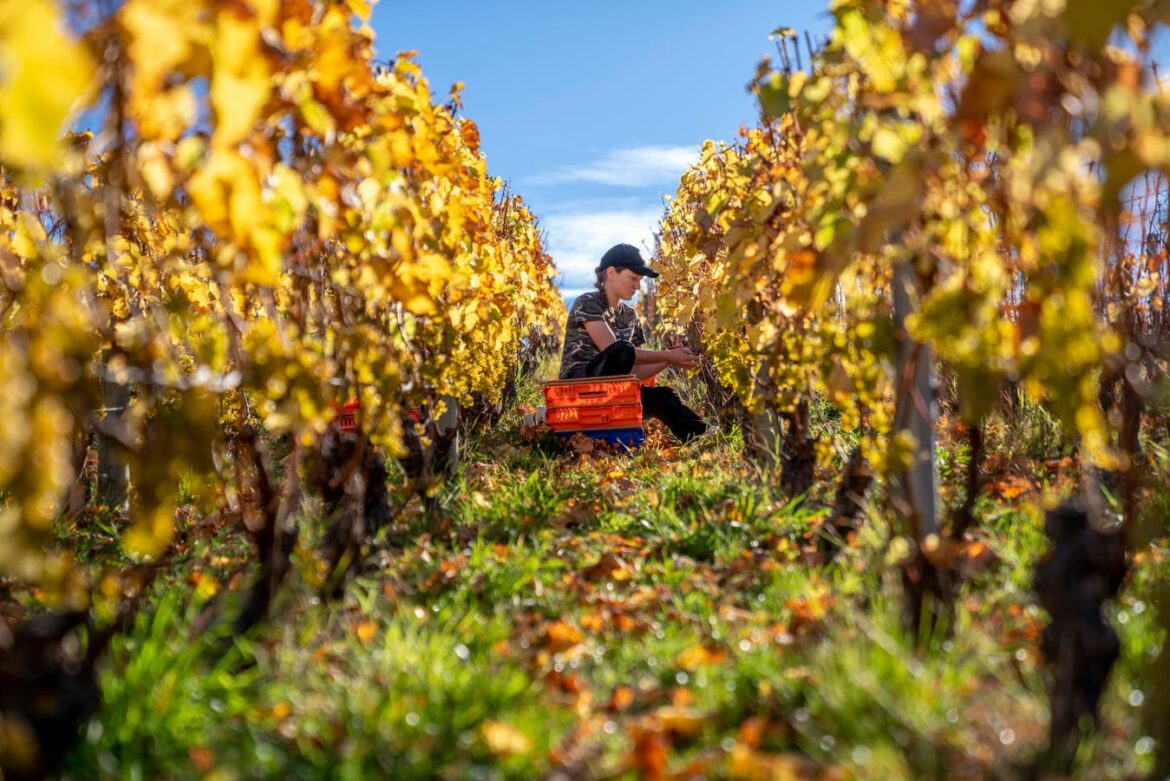
New Zealand’s pinot noir is known for its varied styles, which are influenced by regional … More differences in climate and soil.
Pyramid Valley Wines
Arguably best known for its sauvignon blanc product, New Zealand winemakers are steadily gaining recognition for its pinot noir. The noble grape now stands as the country’s leading red wine and the second-largest wine export after sauv blanc.
New Zealand boasts one of the world’s most export-focused wine industries, with nearly 90% of its production distributed across competitive global markets, according to Statista. In 2023, New Zealand’s wine exports surged by 23%, reaching a record value of NZ$2.4 billion ($1.5 billion USD), with the United States continuing to be the largest export market. The export volume also grew by 19%, surpassing 314 million liters.
Huw Kinch, winemaker and estate manager at Pyramid Valley Wines on Waikari, north of Christchurch on the South Island, emphasizes the role of New Zealand’s environment in the success of its pinot noir.
“The climate, soils and high UV light of New Zealand—particularly from the Wairarapa and in the South Island—are well suited to produce high quality and distinctive pinot noir that shows a unique sense of place, are delicious to drink and suit a wide range of cuisines,” Kinch tells Forbes.
The development of pinot noir in New Zealand is rooted in the country’s diverse viticultural regions, with Marlborough—traditionally known for sauvignon blanc—emerging as a key player. The region now dedicates 2,663 hectares to pinot noir cultivation, illustrating the grape’s increasing importance.
MORE FROM FORBES ADVISOR


“The different climates and soils give a wide range of styles—from the complex, structured and brooding pinot noirs to lighter, more ethereal and silky expressions,” Kinch explains. He further elaborates that wines from regions with more sunshine tend to be darker and bigger in style, while cooler regions produce wines with a more red-fruited spectrum.
A closer look at the Abel clone of pinot noir grapes.
Pyramid Valley Wines
One of the most intriguing aspects of New Zealand’s pinot noir history is the story of the Abel clone, allegedly smuggled from Burgundy in France, which has become a cornerstone of premium New Zealand pinot noirs.
Kinch describes the Abel clone as “a great clone that retains acidity and freshness.”
“It tends to crop quite well and if not managed properly in the vineyard you can end up with too much fruit per vine and the wines can end up a bit thin,” Kinch says. “But if managed correctly, I think it is one of the best clones available in New Zealand, and it is particularly suited to sites with a bit more heat. In marginal sites, it can sometimes struggle to ripen.”
There are other challenges as well. Kinch notes that it takes a lot of work in the vineyard to get clean, ripe fruit. Pinot noir has thin skins, which is susceptible to disease. And as mentioned, New Zealand’s cooler climate is optimal for growing pinot noir, but climate change could upheave that.
“Pinot noir needs a climate that isn’t too hot to get the best out of the variety, but with that, you can’t carry too high of yield,” Kinch explains. “So in seasons where you have good fruit set, you need to fruit thin, which is an expensive task. If planted on the right site, pinot noir results in incredibly complex and transparent wines that show a sense of place. Wines that age well but are extremely enjoyable while young.”
Huw Kinch, winemaker and estate manager at Pyramid Valley Wines.
Pyramid Valley Wines
Relatedly, the rise of pinot noir in New Zealand reflects the country’s commitment to sustainable practices in viticulture. Kinch highlights the growing emphasis on regenerative and organic practices among New Zealand winemakers.
“Many growers are focused on farming the best as they can,” Kinch says. “A growing emphasis on regenerative organic practices is happening throughout the country and in all regions, which is really positive.”
With continued collaboration among producers and a focus on sustainability, New Zealand’s pinot noir is poised to make an even greater impact in the years to come.
“I hope to see that the best sites in New Zealand are respected globally as some of the best sites for Pinot Noir in the world,” Kinch says.

